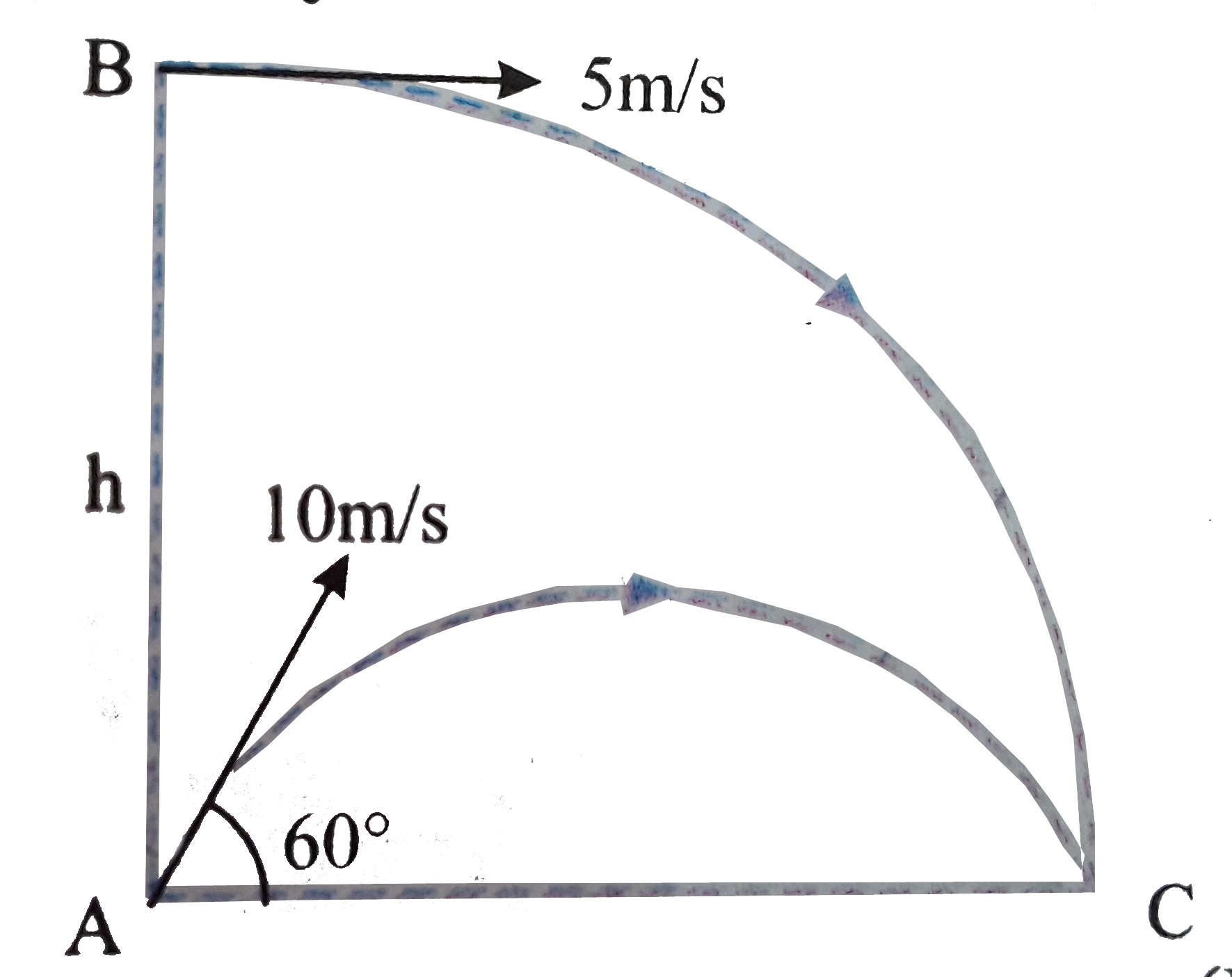A particle is projected up with an initial velocity of 80ft/sec. The ball will be at a height of 96ft from the ground after
2.0 and 3.0 sec
Only at 3.0 sec
Only at 2.0 sec
After 1 and 2 sec
The correct Answer is:A
To solve the problem of determining when a particle projected upwards with an initial velocity of 80 ft/sec reaches a height of 96 ft, we can use the kinematic equation for uniformly accelerated motion. The equation we will use is:
s=ut+12at2
Where:
- s is the displacement (height in this case),
- u is the initial velocity,
- a is the acceleration (which will be negative due to gravity),
- t is the time.
Step 1: Identify the variables
- Initial velocity u=80 ft/sec
- Height s=96 ft
- Acceleration due to gravity a=−32 ft/sec² (since it acts downwards)
Step 2: Set up the equation
Substituting the known values into the equation:
96=80t−16t2
Here, we have used 12a=−16 (since a=−32 ft/sec²).
Step 3: Rearrange the equation
Rearranging gives us:
16t2−80t+96=0
Step 4: Solve the quadratic equation
Now, we will use the quadratic formula to solve for t:
t=−b±√b2−4ac2a
Where:
- a=16
- b=−80
- c=96
Calculating the discriminant:
b2−4ac=(−80)2−4⋅16⋅96
=6400−6144
=256
Now substituting into the quadratic formula:
t=80±√2562⋅16
=80±1632
This gives us two possible solutions for t:
1. t1=9632=3 seconds
2. t2=6432=2 seconds
Step 5: Conclusion
The particle reaches a height of 96 ft at two different times: t=2 seconds (on the way up) and t=3 seconds (on the way down).
- s is the displacement (height in this case),
- u is the initial velocity,
- a is the acceleration (which will be negative due to gravity),
- t is the time.
- Initial velocity u=80 ft/sec
- Height s=96 ft
- Acceleration due to gravity a=−32 ft/sec² (since it acts downwards)
Substituting the known values into the equation:
Rearranging gives us:
Now, we will use the quadratic formula to solve for t:
- a=16
- b=−80
- c=96
=6400−6144
=256
=80±1632
2. t2=6432=2 seconds
The particle reaches a height of 96 ft at two different times: t=2 seconds (on the way up) and t=3 seconds (on the way down).
Topper's Solved these Questions
- MOTION IN ONE DIMENSIONBOOK - ERRORLESS CHAPTER - MOTION IN ONE DIMENSIONEXERCISE - Critical Thinking
19 Videos
- MOTION IN ONE DIMENSIONBOOK - ERRORLESS CHAPTER - MOTION IN ONE DIMENSIONEXERCISE - Graphical Questions
23 Videos
- MOTION IN ONE DIMENSIONBOOK - ERRORLESS CHAPTER - MOTION IN ONE DIMENSIONEXERCISE - Relative Motion
13 Videos
- GRAVITATIONBOOK - ERRORLESS CHAPTER - GRAVITATIONEXERCISE - SET
27 Videos
- MOTION IN TWO DIMENSIONBOOK - ERRORLESS CHAPTER - MOTION IN TWO DIMENSIONEXERCISE - Exercise
319 Videos
Similar Questions
For a body thrown vertically up with an initial velocity u ,the maximum height reached by body from the ground is
View SolutionThe height of a ball thrown into the air with an initial vertical velocity of 24 fts from a height of 6 feet above the ground is given by the equation: h=16t2+24t+6, where t is the time in seconds, for the ball has been in air. After how many seconds is the ball at a height of 14 feets
View Solution
Knowledge Check
An object is thrown upward with a vertical velocity of 128 ft./sec. It will return in
A64 secondsB16 secondsC8 secondsD4 secondsA particle A is projected from the ground with an initial velocity of 10m/s at an angle of 60∘ with horizontal. From what height should an another particle B be projected horizontally with velocity 5m/s so that both the particles collide in ground at point C if both are projected simultaneously g=10m/s2.
 A10mB15mC20mD30m
A10mB15mC20mD30mA particle is projected from ground with speed u and at an angle θ with horizontal. If at maximum height from ground, the speed of particle is 1/2 times of its initial velocity of projection, then find its maximum height attained.
Au2gB2u2gCu22gD3u28g
A boy of height 4 ft walking horizontally with a uniform velocity of 2m/s passes under a bulb which is at a height of 12ft above the ground.The velocity of edge of the shadow of the boy's head (in m/s) is?
View SolutionA ball is thrown upward with an initial velocity of 80ms−1. After how much time will it return to ground ? Draw velocity-time graph for the ball and find from the graph
(a) the maximum height attained by ball and
(b) height of the ball after 12s. Take g=10ms−2.
View SolutionA body is projected at an angle of 30∘ with a velocity of 320ft/sec, then
the direction of motion of velocity after the lapse of two seconds ..........
View SolutionA body is projected at an angle of 30∘ with a velocity of 320ft/sec, then
the maximum height attained ………..
View SolutionA ball is projected vertically up with an initial velocity. Which of the following graphs represents the KE of the ball?
View Solution